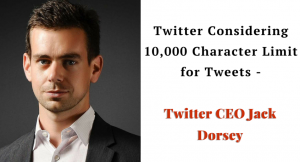Our social media accounts are no longer just means to express ourselves on the internet but have become part and parcel of our persona. Indeed, a person’s digital twin is sometimes as important as the person themselves.
Hackers have long targeted these social media accounts as a means of mining the user’s personal details and later use them for their own unscrupulous purposes. Even worse is the case when hackers seize control of these accounts and use them to defame the user’s or hold them hostage to their whim.
It is thus of the utmost importance that your social identity be as zealously guarded as you would your physical personage.
1. Getting alerts when suspicious activity is detected
Several tools are available to provide timely reminders of unauthorized activity and to raise flags when unexpected behaviour occurs on the account. Such things may be as trivial as an alert on opening the account from a previously unregistered machine, to serious warnings of attempted hacks and/or malicious usage of the account itself.
An Android application called “LazyDog” provides round-the-clock alerts of potentially malicious activity on a user’s social media account and is currently compatible with Facebook, Yahoo, Gmail, and many more.
2. Secure your logins with a password manager
Password Managers securely maintain your passwords so that they are safe from the predatory tentacles of hackers. Tools like LastPass or 1Password are available for common Android and iOS devices and securely store passwords in an encrypted vault. They can alternately be accessed through browser extensions and be conveniently used as required.
3. Controlling account access
Giving people administrative and authoritative rights over yours and your organization provides opportunities to malicious hackers to exploit a vulnerable single point of failure and wreak havoc. Tools like Hootsuite and SproutSocial help prevent risks arising from multiple access accounts and help regulate access.
4. Managing privacy settings
The rudiments of securing your social media account begins at your privacy settings menu itself. Choosing the people who would gain access to social media content is a sure-fire way of avoiding stalkers and other unscrupulous characters.
It is beneficial to set a well-defined hierarchy for users and followers for granting access to social media posts and interactions to limit the points of contact which may be affected by a potential hack. In fact, the privacy settings button can be a powerful friend in nipping the threat of malicious usage in the bud long before other measures need to be considered.
5. Antivirus and Security Software for added protection
With social media downloads and uploads becoming part and parcel of our daily lives, it is highly likely that malware may seep into our systems from social media itself. Thus, it is vital to keep robust antivirus and other security software to minimize malware risks.
Tools like Bitdefender antivirus and Kaspersky have dedicated modules for internet security and can fend of most common threats and maintain a 24/7 watch on your social media interactions. Particularly these can help safeguard your system from cleverly crafted phishing sites.
A Final Word
Saving yourself by ensuring social media security can be quite a challenge. Chapter 247 Infotech has proven itself to be a global leader in customized software development with over 6 years of experience in different domains like web development, blockchain and AI. The heartfelt recommendations of top of the line clients like Tessa, DropDesk and QIPOST underline our credentials as experts in IT Strategy, helping keep your social media applications safe from prying eyes.
Contact us for more inputs to ensure your company’s social media security.







